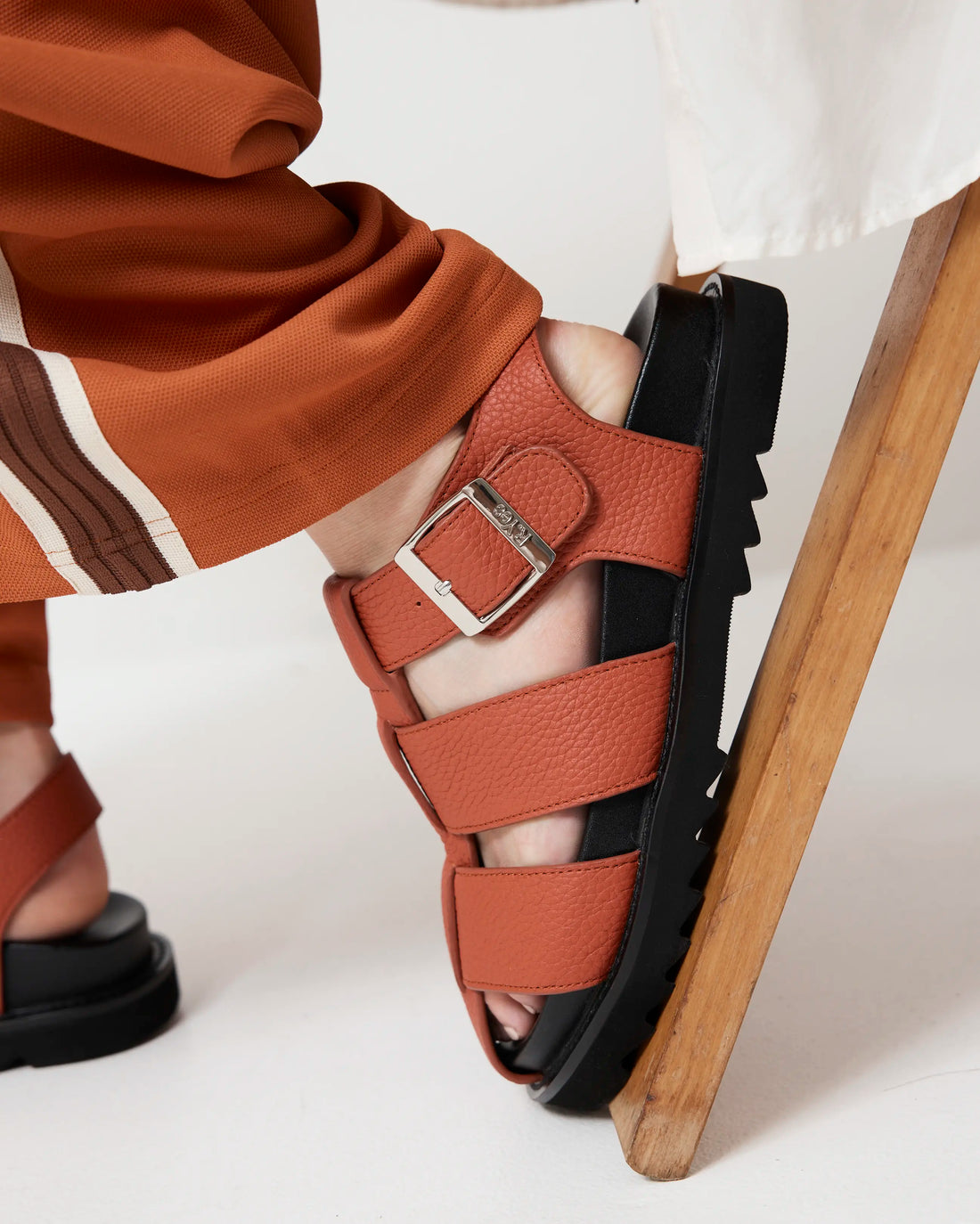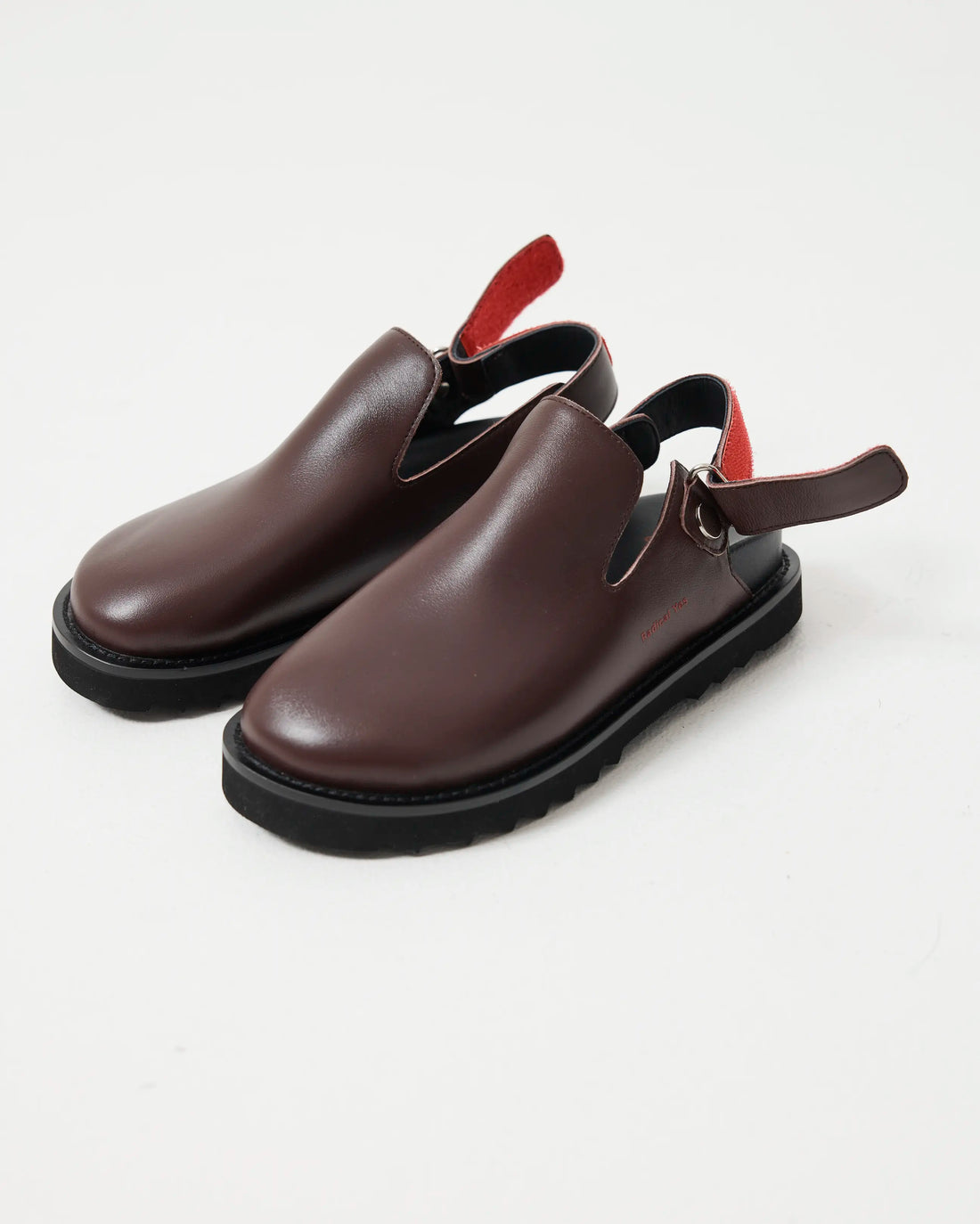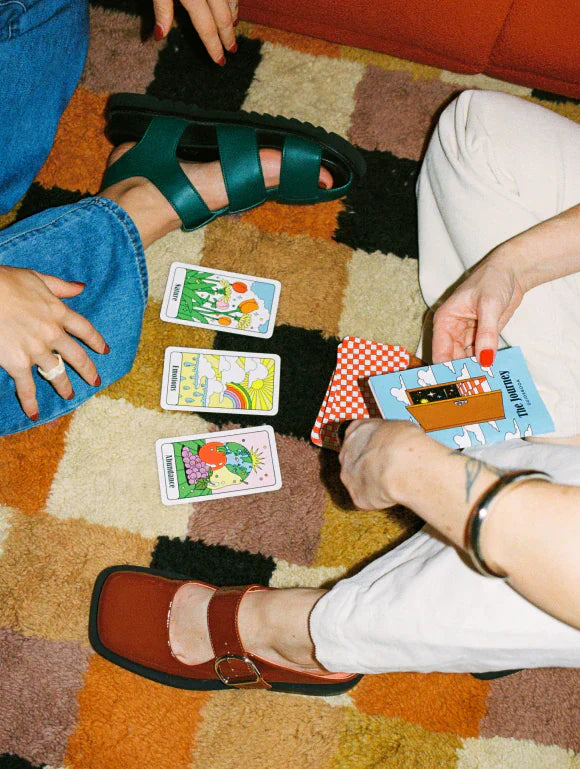The RADICAL THINKING column is written for us by PHD Candidate Harriette Richards, and was conceived in our efforts to support not only up and coming local writers, but also as a space for presenting more conceptual ideas about the relationship between art, garments and all things cultural. In her first column for Yes! Journal, Harriette takes us to the Brooklyn Museum and writes in response to the presentation of Georgia O'Keeffe's clothing alongside her artwork. With O'Keeffe being such a strong influence on our own aesthetic and style, this exhibition, presented as part of the "A Year of Yes: Reimagining Feminism” series, feels like a radically serendipitous place to start!
Art and Clothes
Georgia O’Keeffe: Living Modern Brooklyn Museum, New York March 3 – July 23 2017
Story and photography by Harriette Richards
The Georgia O’Keeffe: Living Modern exhibition at the Brooklyn Museum in 2017 was radical. It resisted the usual tendency of museums to relegate everyday garments to dress history collections and instead exhibited O’Keeffe’s everyday clothing, her hats, shoes and dresses, alongside both photographs of her wearing these garments and recognisable examples of her work. This unfamiliar convergence of work with attire is important as it elucidates the intimate connection between the body of the artist and the work that this body produces. As Haley Mlotek explained, what the exhibition made “clear [was] that O’Keeffe’s style was not ancillary to her genius but fundamental to it.”[*]

Clothing is not only deeply connected to identity, personal and social; it is also deeply connected to the body, both physical and emotional. There is an interdependence between clothes and the body, whereby the body relies on clothes to render it “culturally visible” and clothes rely on the body to animate and enliven them. In being worn, clothes receive a human imprint, shaped by our touch and our smell. In wearing clothes, the body also receives the imprint of these garments; constrained by sleeves and waists, collars and hems, the movements of the body are shaped by the actions the garments allow. The clothes an artist wears have an effect on her identity, and also on the work she produces. This exhibition focused on this interconnection, highlighting the centrality of the relationship between an artist and her dress.

The moments when the details of O’Keeffe’s painting and those of her dress were bought into parallel were the strongest moments in Living Modern. When beautifully hand-sewn white silk dresses, aged to a creamy pink, were set alongside her paintings of seashells and autumn leaves. When two white cotton shirts were situated together with her painting 2 Yellow Leaves, 1928, the ruffle detailing on one of the shirts mirroring the curvature of the leaves. When two Marimekko dresses were paired with her work Ram’s Head, White Hollyhock Hills, 1935, the grey detailing at the hem of one of the dresses echoing the frame of the painting. When a trio of blue shirts, chambray, denim and gingham, were presented alongside a portrait taken by Arnold Newman, in which she wears the denim that became her uniform at Ghost Ranch, New Mexico. The positioning of these pieces together made the connections between O’Keeffe’s art and her dress particularly explicit.

The technique of putting the clothes and the art in conversation added a layer of meaning to both, and when, as in the final galleries of the exhibition, the paintings were not there to speak to the clothes, the garments lost something of their poignancy, something of their pertinence. While the lack of paintings in these final galleries was disappointing, the lack was also illuminating. It drew attention to the importance of bringing clothes and art together. It alerted the viewer to the interdependence between the garments and the paintings, indicating the meaning that is bought to both by bringing the two together, and demonstrating the hollows, the gaps in meaning, that exist when the two are divorced.
This exhibition focused on the connections between the artist and her art. It was not specifically a fashion exhibition, however, there were many fashion references. The final gallery in particular was dedicated to the lasting influence O’Keeffe has had on the fashion industry, as inspiration and muse. The image of O’Keeffe most fervently taken up in fashion is that which she constructed around the backdrop of Ghost Ranch. This place was the subject of much of her later work. The paintings are well-known and, coupled with photographs of O’Keeffe in the same setting that her paintings depict, form a kind of mythologised space, an O’Keeffe-ian wonderland. The final gallery in the exhibition indicated the beguiling nature of this place and its inhabitant, showcasing Calvin Klein ads and Vogue fashion editorials, which were not only shot at her New Mexico home but also “borrowed her look and sought to channel her mystique.” *

Rather than being a fashion exhibition, Living Modern was what might be called a hybrid exhibition. Featured at the Brooklyn Museum as part of the “A Year of Yes: Reimagining Feminism” series, the show celebrated both the work and the life of one of America’s most enduring female artists. In recognising the physical quality of art, the fact that art does not stand separate from the artist, but rather, that the artist and her art are intimately connected, the exhibition fostered deep engagement and emotive response. The garments an artist chooses to wear, and the reasons for which these garments are chosen, tell us much about the artist and their work. The fresh conversations that emerge from such a bringing together of art and dress are valuable, as the material connections between art and clothes are crucial to a greater understanding of the nature of art and the fashioning of the self. By reimagining the exhibition of art and clothes, this exhibition not only revealed O’Keeffe as a radical artist, but also as a radical woman.

Georgia O'Keeffe's Powerful Personal Style
Exhibition photos by Harriette Richards.
Cover Photo: Tony Vaccaro, Georgia O'Keeffe, Taos Pueblo, New Mexico 1960, Chrysler Museum of Art, Norfolk, VA; photo courtesy Michael A. Vaccaro Studios






